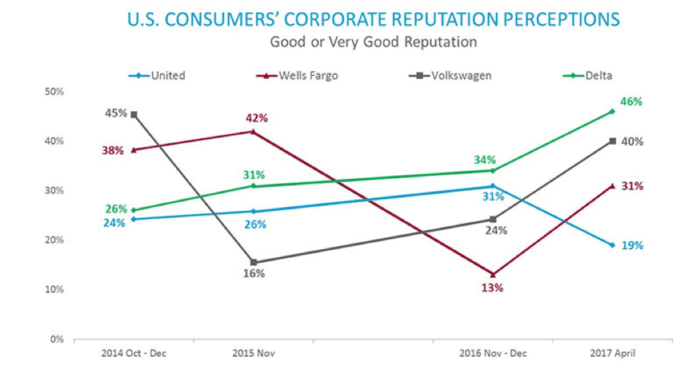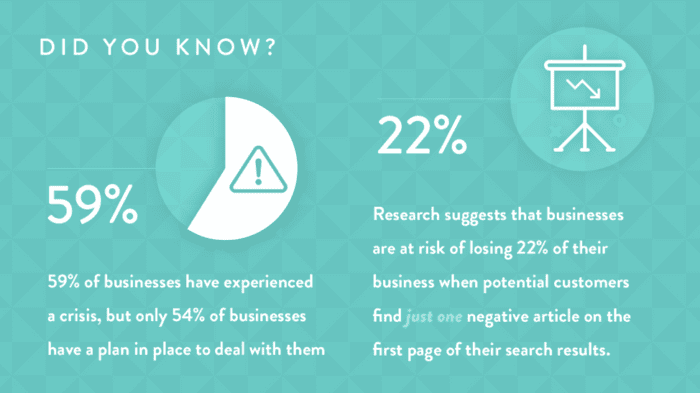It’s essential for PR campaigns to be well thought out and engaging for target audiences on a personal level, or else they risk ending in disaster
It can be difficult to own up to, but time and again we can be found guilty of adopting half-baked or ill-thought-out PR strategies that are destined to fail before they’ve even gotten underway.
We live in a time where audiences are becoming increasingly wise to empty marketing affectations and baseless promises. Today, customers are eager to feel valued, even cherished for their business.
2019 is brimful of shifting sands and moving goalposts. It’s essential for PR campaigns to be well thought out and engaging for target audiences on a personal level, or else they risk ending in disaster. Failing to understand your prospective customers could leave your business going the way of United Airlines, BP or Subway.
When footage of a customer being forcibly removed from a United Airlines flight went viral in April 2017, poor reputation management in response to the incident saw a huge 12% drop in the company’s public perception.
Wells Fargo also suffered heavy reputational losses when news broke that the bank was involved in a fraud scandal. Significant fluctuations in US public perceptions of recent years can be seen in the chart above.
In what appears to be a volatile climate for PR practices and practitioners alike, it could be worth taking a moment to explore the issues that could ultimately undermine your strategies:
You haven't taken organic search into account
In modern PR, we’ve seen traditional marketing align with Search Engine Optimisation, and PR practitioners must ignore it at their peril.
Organic search is a great way of boosting the visibility and credibility of a company’s PR campaign. When content is optimized correctly, it’s capable of catapulting your business to the very top of Google’s search engine ranking positions via well-selected keywording and tagging - bringing a hearty level of exposure for businesses to retain long after the initial campaign has concluded.
There are few more effective ways of supercharging your branding strategy than through SEO. By optimizing your content by anticipating the type of keywords your target audience will be entering into the likes of Google, Bing and Yahoo!, it’s possible to market your business and its values to large swathes of potential customers in a cost-effective manner.
Home Depot Media Strategy Manager, Erin Everhart, believes that the intrinsic links between SEO and PR are vital in ensuring that any campaign has the best chance of success: "Your SEO team should be helping your PR team optimize the links in all of their earned media coverage — things like company press releases or non-paid stories. SEO can help choose links that have keywords that need a ranking boost, and they can also make sure PR is pulling the right URL to link to."
The combination of search and PR can make for something of a formidable team when it comes to delivering strong brand associations among target audiences and can prove very helpful in guiding customers through all stages of their sales journey.
Download our Individual Member Resource – Digital marketing strategy guide
Discover how our Digital Marketing Strategy Guide will help you to succeed quickly and more easily—so whatever industry sector you work in, you’ll know how to prioritize to define your initiatives for success.
Access the Digital marketing strategy guide
Lacking consistency
Like Yin and Yang, a PR team must strike a mutual understanding and balance with, say, its company’s communications department - or social media team.
Work towards creating communicative consistency within all departments throughout your company as a way of ensuring that your branding is consistent and your message is, well, on-message. If you were to find out that your marketing department is effectively working against the business objectives set out, then your PR campaign is doomed to fail before it begins.
It is key to create a coherent and cohesive tone of voice within your company that can be followed exponentially. One useful way of ensuring that all areas of the business are reading from the same page is through constructing a tone of voice document, which can pay dividends in creating a recognizable voice across all official business channels. Brand guideline documents can also help in maintaining a strong and recognizable communicative manner in all customer-facing areas of a company.
To build further towards levels of cohesion between your departments and ensure that there are no vital collaboration opportunities lost, it can greatly benefit your organization to set up regular meeting opportunities between departmental decision makers - doing so could ultimately help to develop a more concrete PR strategy and align wider business goals.
You’re not keeping track of your results
Your PR campaign is doomed to fail if you’re failing to keep track of your results. It’s imperative that you regularly ask yourself whether you’re reaching the correct audiences, if your textual and multimedia content is being shared often enough and if your articles are positioned within the right niche for your business in order to draw the best referring traffic.
Fortunately, there are plenty of services available that provide excellent support in order to help your organization to answer the big questions and optimize your campaign based on big data. If you’re operating on a budget, Google Alerts is a completely free tool to monitor your media coverage, while Mention enables you to check your exposure as well as analyze your closest competitors.
It’s important that you never overlook the wealth of analytics available to you. If you’re unable to create the optimum level of exposure for your target audience and failing to act on it, then you’re effectively throwing your money down the drain.
In a recent interview with Hackernoon, Mariya Lapuk, Co-Founder of Vinci Agency stated that tracking your analytical results is vital for gaining a greater understanding of your KPIs: "I think it’s improper to consider a conversion from media and, in principle, to tie traffic to Key Performance Indicators in PR - this isn’t marketing, after all. Nevertheless, the stronger the media coverage, the more views you can expect to receive. If TechCrunch writes about you, then the rest of the media will reprint it."
Failing to budget appropriately
On the topic of throwing money down the drain, it’s important that your PR campaign is budgeted accordingly.
While you don’t have to be sitting on a fortune in order to craft an effective PR strategy, but it’s essential that your ambitions are scaled accordingly. If you were to set aside 70% of your budget for influencer campaigns you could be at risk of drawing hefty levels of attention from audiences without having a sufficient level of accompanying corporate branding to convert them into customers.
When determining a budget for your PR operation, be sure to consider factors like:
- The PR spending of your closest rivals.
- Cash flow forecasts for successful and unsuccessful campaigns.
- Whether aspects of your strategy can be implemented in-house.
- Establishing the overall goal of your campaign: what will make it a success, and how much will it cost to achieve?
Make sure you work with a well-thought-out budget that’s been constructed carefully with the help of key decision makers throughout your business and use it as the cornerstone in creating a concrete strategic blueprint before you decide to spend a single penny. Doing so could make a world of difference between a superficial PR strategy and a slick success.
Your business isn’t ready to go global
Displaying a perceived ignorance of wider cultures can catch just about any professional unawares - not to mention carry dire consequences. Occasionally businesses forget that the kind of PR campaign that becomes a roaring success for US and British audiences might not be as well received on the shores of, say, Italy, or further afield in China and Japan.
The best PR strategies are ones that can adapt to different markets, as well as lingual and cultural idiosyncrasies. The most important thing here is to make sure you’re fully aware of the type of audience that you’re aiming to reach - as well as what they respond to and what they’d be less receptive of.
...or local for that matter
Sadly, scalability issues can work both ways. If you’re unable to successfully localize your business then your PR campaign could be destined for disaster. As the leading industry news website, PR Daily explains: "Business issues vary from country to country. Yet many companies aren’t willing to put in the time to localize the storytelling for each target country. The more effort a company puts into shaping the content to the characteristics of a particular market, the stronger the story becomes."
Make sure your PR strategy invests time in optimizing its services and products locally. This helps build a level of targeted trust between companies and their customer base that will continue for many months after the marketing campaign has run its course.
You’re trivializing your PR
Younger businesses and startups can often be found guilty of letting their excitement get the better of them by releasing an ill-thought-out PR strategy that’s not yet developed enough to effectively achieve their goals.
There’s a good reason why PR stands as the all-encompassing industry that we see today: creating campaigns is hard work. To create a successful strategy within a smaller-scale business, it’s important to invest a considerable amount of time into identifying just who your target audience is. Think about the type of messages you want to send them, as well as the sort of plan that will be capable of providing your company with the level of exposure that you’re after.
Being on-message is only a fraction of the job, too. Businesses need to be prepared to answer customer enquiries and respond to interest generated.
Conclusion
It feels important to conclude with a note of caution. Some businesses are more ready for success than others. If you feel ready to venture out into the big wide world with an effective PR campaign to boot, it’s vital that your business is in a position to receive the significant boosts in website traffic - and your customer service departments are able to deal with the increase in requests. If you’re unable to guarantee an acceptable level of service in the face of increased levels of interest, then you may end up swiftly turning to a more loathsome form of PR: damage control.
Modern PR can seem like a volatile industry in the age of interconnectivity, but by gaining an understanding of what could undermine your campaign, your business could be set to benefit from a level of exposure that provides it with an edge over its fiercest competitors. Just remember to keep those books balanced and stay in constant contact with all other company departments. Life as a business owner needn’t be unnecessarily risky!
Peter Jobes is a tech, crypto & blockchain writer having worked with the Press Association and clients like Tesco, RAC and HelpUCover. CMO at Solvid.









